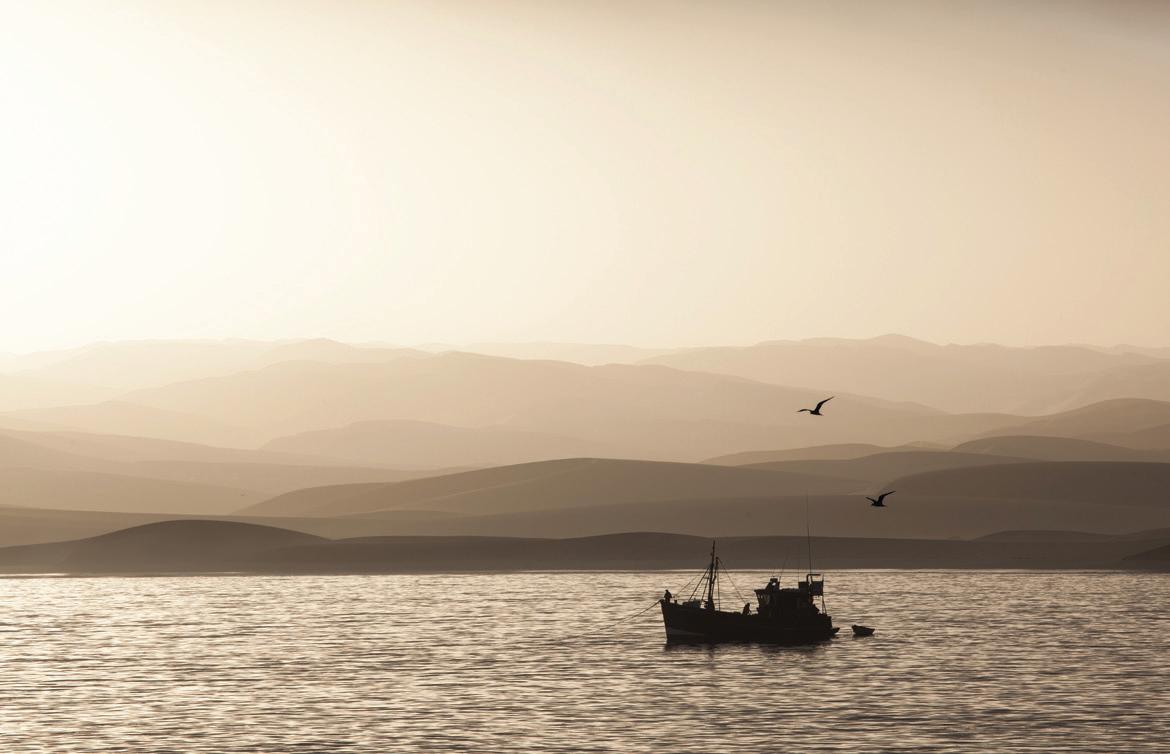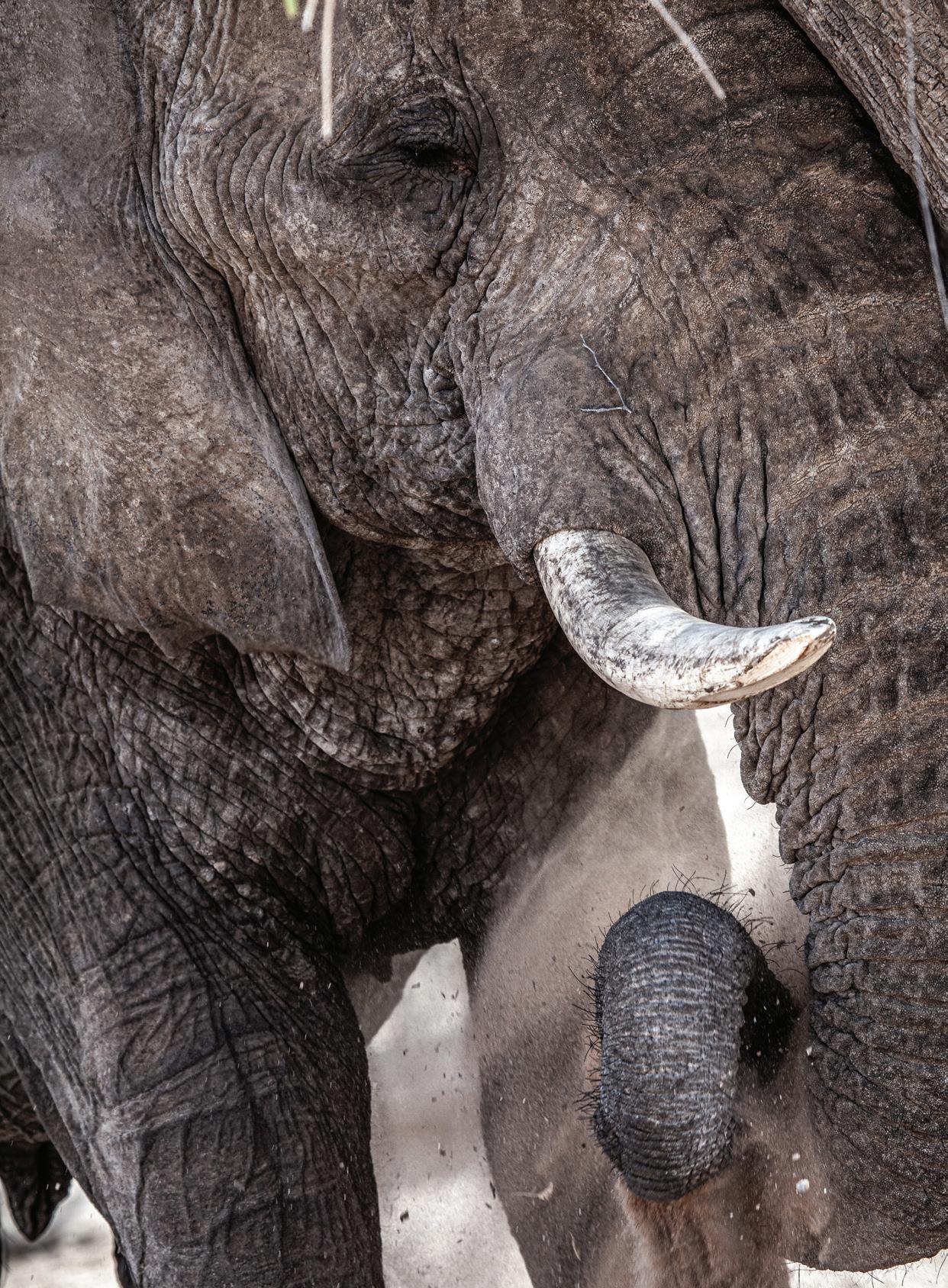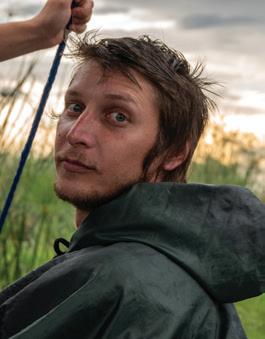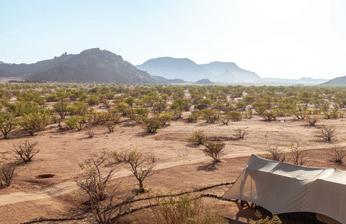
6 minute read
PHOTOGRAPHY FEATURE Le Roux van Schalkwyk
Photography Feature:
Le Roux van Schalkwyk
Growing up, I loved spending hours going through the stacks of our family photo albums. It eventually led to me trying my own hand at photography with this trashy early-model digital camera my dad bought when I was in high school. Even though the camera had a lot of shortcomings it allowed me to play around and learn things like basic composition without the cost of developing film.
I love the way in which the soft light during sunset can make even the harshest environment look so inviting. Hoanib River 24 mm, f/13, 1/20 ISO 160

This young lion stubbornly and half playfully kept chasing away the doves around the waterhole. Etosha National Park 400 mm, f/10, 1/640 ISO 500

Hottentot Bay is with a doubt my favourite place in Namibia. It is as secluded as it is beautiful. Fishing boats use the bay as a safe haven to anchor for the night which in turn creates the potential for incredible photos at sunset. Hottentot Bay 260 mm, f/13, 1/500 ISO 200


Gentleman, the elephant bull, rested his head on a leadwood tree while lazily covering himself with sand. Aba-Huab River 250 mm, f/8, 1/500 ISO 640
Each sunset in the Namib is unique. Tiras Area 105 mm f/11, 1/80 ISO 640

ABOUT THE PHOTOGRAPHER

My first camera was a Canon D400 DSLR which my parents gave me for my 21 st birthday. Playing around with this camera taught me how to manipulate in-camera settings in order to create an image that I wanted to produce. These days I shoot with a Canon 5D MkII and my camera bag contains 24-105 mm and 50 mm lenses and a 100-400 mm lense plus a Fujifilm X100S.
Living in Namibia it’s almost impossible not to photograph the beautiful wildlife and endless landscapes that are so plentiful. It’s also very challenging because of the heaps of incredible photos of wildlife and landscape that already exist, as well as the new images that are produced daily. Instead of seeing this as negative, I try to use it as motivation to create images that feel unique and tell their own stories, but in a slightly different way. TNN
Even though white rhinos have a friendlier demeanour than their cousin, the black rhino, it was still scary tracking this big creature on foot through dense bush. By the scratches on the animal’s back you can clearly tell how thick the bush is. Waterberg National Park 400 mm, f/5.6, 1/250 ISO 320 The remains of a jetty at Hottentot Bay that have been taken over by birds. Fog in these parts can get so dense that you don’t dare to wander too far. Hottentot Bay 105 mm f/13, 1/800 ISO 200



At home among the rocks
Text Elzanne McCulloch Photographs Le Roux van Schalkwyk
Ondili Meumbo is an Oshiwambo expression meaning ‘I am at home’. With its selection of lodges across the country – including Kalahari Red Dunes Lodge, Teufelskrallen Lodge, Desert Homestead Lodge, Desert Homestead Outpost, Hohenstein Lodge and Ti Melen – this Namibian hospitality family has cut its teeth on the fine art of the authentic safari experience. Now they have wandered into the wild northwest of Namibia’s enigmatic Damaraland, and found a new home among the rocks.
The landscape astounds on a morning nature drive with our guide. A tapestry of incredible rock formations surrounds us. The patterns on the mountains we slowly drive past remind me of abstract art that would not look out of place in a high-end gallery in New York. Two springbok stroll across dry plains and a flock of ostrich peck away in the background. Everything is peaceful. Quiet. Still. The clear blue sky overhead a crowning glory to the beauty of it all. The rough and rugged landscape. This raw nature.
We have wandered into one of our favourite regions, Damaraland. The iconic geological wonders of the area and the harsh beauty is what draws visitors, but there are even more wonderful stories hidden among the rocks strewn about over millennia. The area is home to one of the most noteworthy concentrations of rock engravings in Africa, and it is inhabited by desert-dwelling wildlife and people alike. You will be enthralled by all the region has to offer, here, where thriving life seems almost unimaginable.
Dawn breaks over the mountains to the east and sets alight the mopane-dotted landscape laid out in front of our tent. After a leisurely breakfast we embark on a nature drive. The emphasis is most certainly on nature. To be enjoyed and appreciated. These experiences are what set Namibia apart from so many other destinations in the world. This honour that has been bestowed on us. Unblemished earth. Untouched, raw and rugged. Something worth fighting for, something worth preserving. There are never any guarantees of spotting wildlife, especially not in this unpredictable terrain. Weather and whim could lead the region’s wildlife herds (or individuals) in any direction. Some walk more than 70 km in a day in search of grazing and water. Yet, luck was on our side during our visit. We had the honour of spending some time with an old elephant bull. Calm and nonplussed, he clearly has all the time and patience in the world. Our guide makes sure that we are not directly in the old bull’s wandering path, and we spend our time snapping away with our cameras as he gives himself a dust bath and then seems to take a short nap leaning against an old Ana tree. Our love and longing for capturing the beautiful creature satiated, we leave the old man to his wanderings and head home to our tented sanctuary among the rocks. A midday dip in the refreshing pool, drinks in the cool shade of the sitting area, and a delightful braai for dinner. What better way to spend a day in Namibia?
With only 12 furnished en-suite tents, Twyfelfontein Adventure Camp is small enough for an intimate stay, away from the crowds. The camp is unassuming in the best possible way. Tucked into the flank of a rocky outcrop, the ‘glamping’ tents are comfortable and yet still inspire a sense of adventure. There is a connection with nature, without the hassle that some associate with camping. Beautiful simplicity is the style and it is wonderfully unpretentious.
Other popular and worthwhile activities in the area include a visit to the nearby Damara Cultural Village where you can learn about ancient skills and the enigmatic people who have called the area home for generations. Or a visit to Namibia’s first World Heritage Site – Twyfelfontein. This open-air art gallery houses over 2 000 rock engravings by San shamans, some estimated to be more than 6 000 years old.
Whether it is history, wildlife or the beauty of the dramatic landscape that calls your heart to Damaraland, we can highly recommend a stay among the rocks with Ondili at Twyfelfontein Adventure Camp. TNN
Book now or find out more at ondili.com
DID YOU KNOW?

• Avoid areas where the animals might feel trapped. • Don’t obstruct their movement when you encounter them. • Drive slowly and keep your noise levels down. • Keep to existing roads and tracks. • Stay in your car when encountering an elephant herd. • Don’t camp at waterholes; use nearby campsites instead. WHEN VIEWING DESERT-ADAPTED ELEPHANT THERE ARE A FEW IMPORTANT RULES TO STICK TO:













